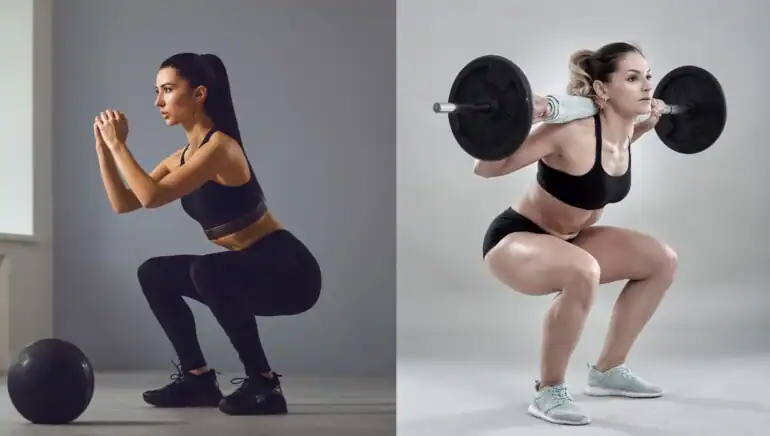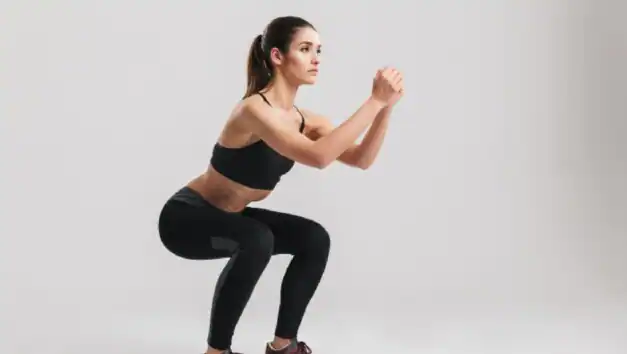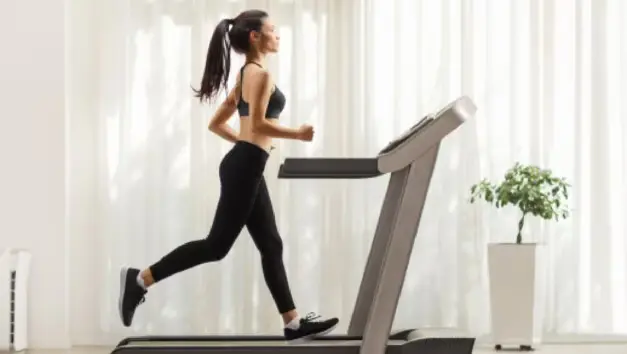Squat vs Deadlift for strength: Which 1 is Superior?
Squats and deadlifts are both complex exercises that use many muscle groups at once to complete a movement. Is one superior than another? Let’s find out.
It’s a fight of squats and deadlifts! Image credit: Adobe Stock.
Squats and deadlifts are two of the most popular exercises for strength training. Both target key muscle groups and are critical for increasing strength, muscular growth, and athletic performance. People frequently use these workouts to improve general fitness and attain goals such as toning their bodies and increasing muscle. Squats focus exclusively on the lower body, particularly the quadriceps and glutes, but deadlifts work a larger variety of muscles, including the back, hamstrings, and core. Squat versus deadlift: Which workout is better? Let us find out.
Also Read: 11 Effective Strategies to Manage Mood Swings During Periods
Squat vs Deadlift for strength
What are squats useful for?
Squats are a popular workout in which the knees bend and the hips drop from standing before returning to standing. This movement works several muscular groups, including the quadriceps, hamstrings, glutes, and core. “One of the most significant benefits of squats is their ability to enhance lower body strength,” claims fitness guru Mukul Nagpaul. Regularly performing this exercise can help to grow muscle mass, enhance mobility, and promote joint health.
[web_stories title=”false” excerpt=”false” author=”false” date=”false” archive_link=”true” archive_link_label=”” circle_size=”150″ sharp_corners=”false” image_alignment=”left” number_of_columns=”1″ number_of_stories=”5″ order=”DESC” orderby=”post_title” view=”circles” /]
What are the benefits of squats?
Squats are a very effective workout that provides several fitness advantages. Here are five major advantages of integrating squats into your training routine:
1. Helps develop muscles.
Squats typically work the quadriceps, hamstrings, and glutes, making them an ideal exercise for increasing lower body strength and muscular mass. Squats, which engage these key muscle groups, help produce toned, powerful legs and buttocks, according to a research published in the Journal of Sports Science and Medicine.
2. Strengthens the core muscles
Squats work the lower body, but they also activate the core muscles, such as the abdominals and lower back. Maintaining perfect form during squats necessitates substantial core stability, which strengthens these muscles over time.
Squats can help strengthen your core. Image credit: Adobe Stock.
3. Burns calories.
Squats are a complex movement, which means they work numerous muscles. “This increases the overall energy expenditure, leading to a higher calorie burn during and after the workout,” Nagpaul explains. So it can also aid in weight management and fat reduction.
4. Enhances joint health
Squats can help strengthen the muscles, tendons, and ligaments that support the knees and hips. This support increases joint stability and helps to avoid injuries, supporting overall joint health and function.
5. Promotes flexibility and mobility.
Squats can help improve flexibility in your hips, knees, and ankles. This expanded range of motion not only enhances sports performance, but it also promotes good posture and lowers the chance of injury in everyday activities.
How do deadlifts affect your body?
Deadlifts are a complex exercise that works numerous muscles at once. When done consistently, it strengthens the lower back, glutes, hamstrings, and core. “Deadlifts are known to enhance overall muscle mass, boost metabolism, and improve posture by engaging multiple muscle groups,” Nagpaul explains. Deadlifts can also enhance grip strength and stability, lowering the chance of injury.
Also Read: Squat Vs. Deadlift — Which Is Better For Strength, Mass, and Power?
What are the benefits of deadlifting?
Here are five significant fitness advantages of deadlifts that you get when you do them regularly:
Squat vs Deadlift for strength
1. Improves whole-body strength.
Deadlifts are a complex activity that engages several muscular groups, including the lower back, glutes, hamstrings, quads, core, and even the upper body, according to a research published in the Journal of Sport Rehabilitation. This makes them excellent workouts for increasing general strength and muscular hypertrophy.
2. Activates the core.
Deadlifts require a high level of core engagement to keep the spine stable and prevent injury. This not only strengthens the core but also improves general stability and balance, which is important for sports performance as well as everyday tasks.
3. Improves posture.
Deadlifts work the muscles essential for appropriate posture. By exercising the back, stomach, and shoulders, they assist improve posture and prevent slouching, resulting in a more upright and confident stance.
4. Boosts metabolism.
Deadlifts work huge muscular groups, resulting in a substantial caloric expenditure. This can boost your metabolic rate, which aids in weight management and fat reduction. Deadlifts increase muscular mass, which contributes to a greater resting metabolic rate.
5. Improves grip strength.
Holding and lifting big weights during deadlifts greatly improves grip strength. “This improvement in grip can translate to better performance in other exercises and activities that require strong hands and forearms,” Nagpaul says.
Squat vs. deadlift: Which is better?
Squat vs Deadlift for strength
“Deadlifts are often considered better than squats for overall strength and functional fitness,” Nagpaul explains. They activate additional muscular groups, such as the lower back, glutes, hamstrings, core, and grip muscles. In reality, deadlifts incorporate the actions of squats, bending, and standing, thus they provide the advantages of two workouts.
Also Read:
Running on a treadmill can help you lose weight. Image credit: Adobe Stock.
They also improve posture and core stability. While squats are great for working the legs and lower body, deadlifts provide a more complete exercise, building upper and lower body strength.
Squat vs Deadlift for strength
Health Conscious Plus
Welcome to Health Conscious Plus Find health insights, disease management tips, meal plans, and mindful living strategies for a healthier life.




